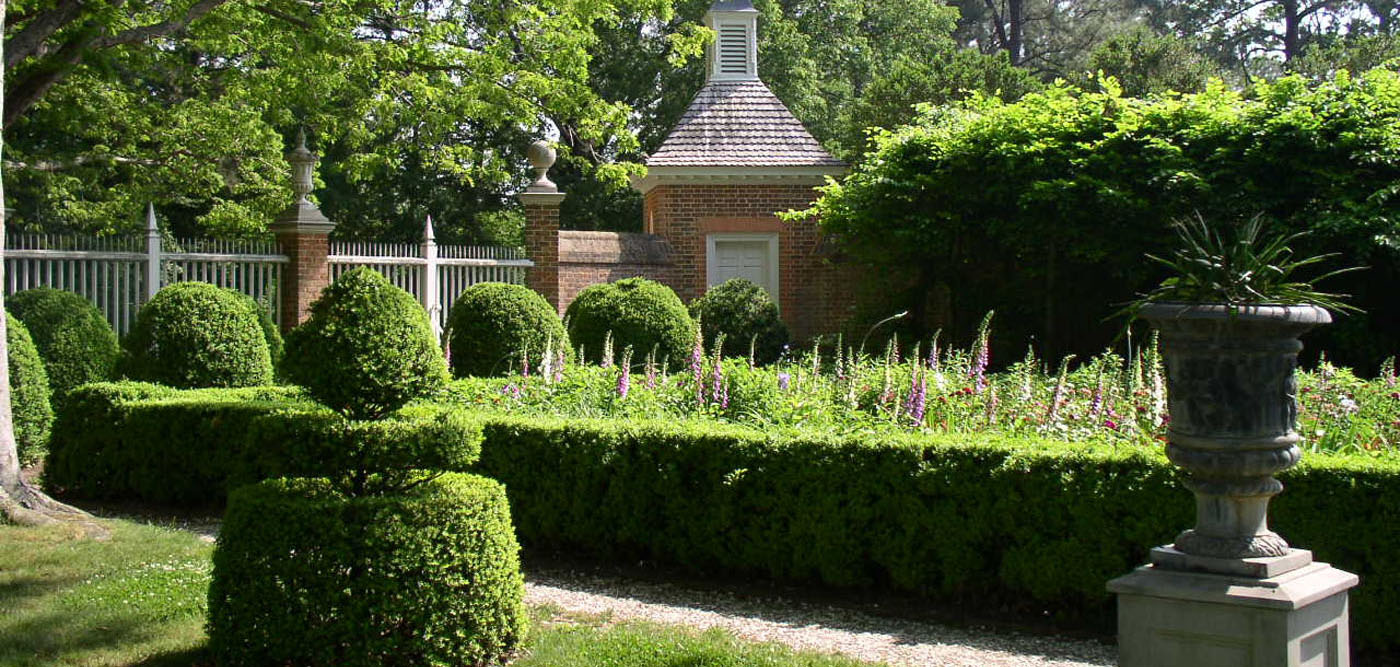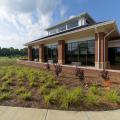Landscape Design for Antebellum Homes
 Antebellum homes and their modern versions dot the Mississippi landscape in celebration of our region's traditional architectural heritage.
Antebellum homes and their modern versions dot the Mississippi landscape in celebration of our region's traditional architectural heritage.
Romanticized in film and novels, the traditional plantation garden is often envisioned as a spacious ornamental landscape, complete with sweeping lawn vistas and long allee's of oak trees leading to an elegant manor. While this landscape may have been true in some cases, landscape historians report that many plantations were really working farms and offered little time for vast ornamental gardens. Many of these antebellum properties featured utilitarian gardens to produce food and medicine for the family and workers. So how should the landscape appear today when one has a historic home from this period?
Just as the generations of families have changed over time, so too have the uses of the landscape. Rarely are these properties used any more as working farms but instead have become public or private pleasure grounds. However, there are a few landscape principles that may be borrowed from the past to help make a historic home and its garden look 'just right.'
Background
As new wealth poured in from 'King Cotton' and other economic crops in the early 1800's, affluent Americans began to search for a new architecture style that was simple yet elegant. About 1820, American architects embraced the use of Greek building elements such as columns and pediments (a triangular gable on the front of a building) for capitols, monuments, and later, homes. The use of Greek Revival rapidly spread throughout the country as citizens wanted to become a part of America's 'first national architecture style.'
This new style used a strong symmetry for all lines, buildings, and features. Ornamental gardens from this period were however still strongly influenced from formal English landscapes. American ornamental garden designs from the period of 1820 and 1850 were often rectangular parterres that divided the garden into equal parts. These rectilinear garden beds were traditionally bordered in dwarf boxwood, and were planted with flowers, herbs, and bulbs; and often enclosed by a picket fence. In contrast to the small parterre gardens of towns and cities, plantation gardens were larger and included traditional European garden features such as formal avenues, bowling greens, terraces, and elaborate box parterres. Curvilinear garden shapes did not become popular until after the 1850's.
Historic Garden Design Principles
Use strongly organized shapes
A central idea to organizing all exterior items in the early 1800's--including roads, outbuildings, walks, garden beds, lawn areas, and trees--was the use of a strong axial line. Popularized in French and Italian landscapes, this long linear feature typically created a dominant centerline to the front door or middle of the house (usually accomplished with a grand carriageway, an allee of trees, or a walk). This central line was framed by the symmetrical landscapes on both sides, often rectangular in form. Porches, patio areas, garden beds, shrub borders, and trees were oriented from this line to allow the house to be the organizing feature. Also introduced to the landscapes of this period were amenities such as gazebos, pergolas, trellises, arbors, and statuary, which were placed on or within these rectangular lines. Paths of gravel or oyster shells helped to subdivide the larger landscape into smaller garden rooms.
Use of evergreens
Evergreen trees and shrubs formed the backbone of the garden in the gardens of this period. Large evergreen such as cypress, cedars, and yew were planted in symmetrical linear lines that created tall vertical walls to separate views and individual gardens. Smaller parterre gardens featured dwarf evergreen shrubs such as box planted along the edges of all hard landscape items, such as brick walks. Camellias, gardenias, oleanders, and arborvitae were often used during that period to provide a strong evergreen format to all garden areas.
Select plants common to that period
With established port towns along the Gulf Coast, the plants of Europe and Asia were well introduced to American markets by the 1800's. In addition to exhibiting wealth and prestige, obtaining these exotic species fortified the owner's feeling of control over his land. The South's mild climates and long growing season were suitable for newly introduced plants from China and Japan, and included camellias, tea olive, banana shrub, crape myrtle, and wisteria. Additionally, local native plants were used for shade and blossoms. Luckily, many of our best garden plants today were common to that period.
COMMONLY USED GARDEN PLANTS OF THE 1800'S:
|
Common name |
Scientific name |
|
|
|
|
TREES: |
|
|
Live oak |
Quercus virginiana |
|
|
|
|
SHRUBS: |
|
|
Flowering quince |
Chaenomeles speciosa |
|
|
|
|
FLOWERS AND GROUNDCOVERS: |
|
|
Phlox |
Phlox paniculata |
Publications may download photograph at 200 d.p.i.
These factsheets were written by Robert F. Brzuszek, Assistant Extension Professor, The Department of Landscape Architecture, Mississippi State University.
Publications
News
Landscape design and natural landscape enthusiasts will gather at Mississippi State University to perfect their craft and learn from other experts, an annual event happening this year on Oct. 18. The 68th Edward C. Martin Landscape Symposium will be held from 8:30 a.m. to noon at the Bost Auditorium at MSU.
May is here and you know what that means, it’s go time!



